Insect and Rodent Exterminators has the experience and professionalism necessary to handle any insect or rodent control problem. As an exterminator, we know what pests are native to the Delta area, and will work with you to develop a plan to address your specific infestation.
We understand how urban pests operate and know that an infestation can be overwhelming. We have been providing professional pest control in the Delta and Lower Mainland area for over a decade. Our technicians can get right to work as soon as you give us a call.
Our goal is to work with you to develop a long-term solution-not to just put a bandage treatment on the problem.
Insect and Rodent Exterminators will work with you to develop a sequence of safe-to-use treatments and chemical applications. They will work with you to make sure your home or business becomes, and remains, pest-free.
Ants
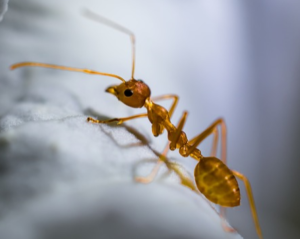
Ants aren’t known to carry many diseases, but they can contaminate your food. Some species like carpenter ants can even cause structural damage! It’s important to keep your house neat and tidy to avoid infestations and to contact a certified professional if you suspect any sign of an infestation.
Common species of ants in Delta include the grease ant , the pavement ant, and the carpenter ant. While these ants don’t usually bite, except the grease ant, they can cause extreme damage. Finding one ant is typically an indication that there are many.
There is no problem too big, or too small. Get in touch with us and we are certain we can eliminate your ant problem for good.
Bed Bugs

Bed bugs tend to live inside mattresses, box springs, bed frames, moldings, couches, wallpaper, and cracks and crevices on floors or carpeting. These pests are found in every residential and commercial setting, traveling easily from place to place as they ride along uninvited on your clothing.
Bed bugs can cause red, itchy welts, so it’s important to rid yourself of an infestation as soon as possible. Signs include bite marks, bloodstains on your sheets, and actual sightings, as bed bugs are small but light-colored–usually the color of red or brown. While bed bugs can sometimes be eliminated by washing all of your fabrics on the hottest possible setting. This doesn’t always do the trick, and you may need to contact a bed bug exterminator.
Spiders
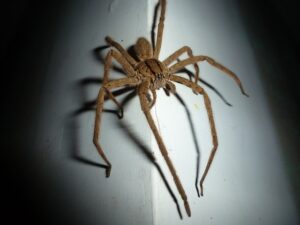
Spiders are scary to look at, and while most household spiders are not venomous, a bite from even a nonpoisonous spider can be painful and itchy. They will hide during the day and come out at night to feed, preferring to hide in remote, dark areas, such as garages or basements. Clear their webs as soon as you find them, exercise caution when reaching into dark corners.
It’s important always to let a pest control professional handle a spider infestation. Furthermore, most species of spiders are incredibly beneficial to the environment, so you will want to be cautious about how and if you choose to remove them.
Beetles
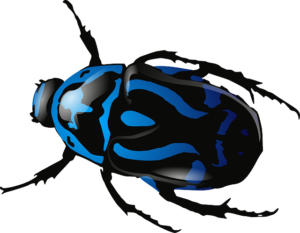
There are several common types of household beetles, all with different behaviors and attractants. Most household beetles are difficult to remove because they are incredibly adaptable and do not dehydrate easily. They also possess resistant outer shells that make them difficult to treat with other forms of insect removal. Beetles can damage your carpet and upholstery fibers, or even go after your food products. Early detection of a beetle infestation is imperative for proper control and elimination.
Fleas
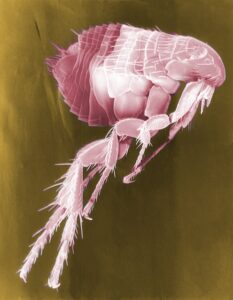
Fleas are parasitic creatures that feed on your blood. While flea infestation is most common among dogs, they can also feed on humans. These pests can jump up to eight inches high and can take up residence in your shoes, pant legs, or a stack of blankets. It is very easy for a flea-ridden cat or dog to spread an infestation to the entire home quickly.
Flies
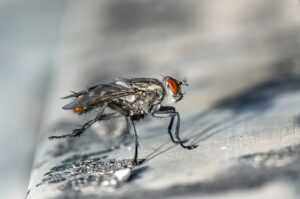
There are several types of flies that may choose to invade your home or business. Fruit flies are also popular, requiring only a small amount of fruit lying on the counter to create a full-blown invasion. Flies spread disease, and are generally attracted to open sources of food and water. Keeping everything clean, dry, and crumb-free can help reduce their populations.
Moths
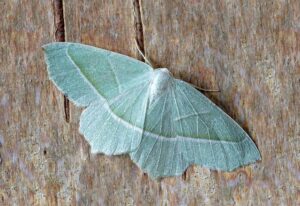
Moths like to live in a dirty warm, dark place where they have access to a source of water and food. Moths move indoors if they have a location where they will not be disturbed. Infestations are frequently found in pantries or clothing closets. Cloth moths and other moths can seriously damage the clothing and fabrics of your home. Larvae of the moth feast on clothing fibers, with adult moths laying up to fifty eggs over their three-week lifespans. Cleaning your home regularly and laundering all clothing can help reduce the likelihood of a cloth moth infestation.
Rodents
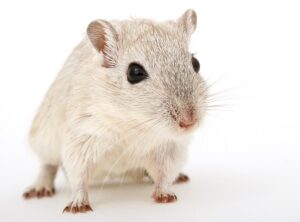
Mice, rats and squirrels are three common rodents that infest properties in Delta. These pests can damage buildings through their gnawing and burrowing behavior, and can also spread a variety of illnesses and diseases. They adapt easily and can be really hard to get rid of. Signs of rodent infestation include feces, the smell of their urine and gnawing marks and a lot of scratching noise. Rodents will gnaw anything softer than their teeth. This could include wood, plastic, metal, insulation and even rubber tires. Rodents can climb inside vertical pipes and travel between buildings over rooftops or wires. They have excellent balance and can even burrow.
To keep mice, rats and squirrels out, make sure all holes leading into your home are sealed. Any cracks or gaps that can be used as entry points must be eliminated. You should also keep all of your food in tightly-sealed glass or hard plastic containers, and maintain a clean and tidy living environment to keep these unwanted rodents out.
Insect and Rodent Exterminators is one of the best rodent exterminators in Lower Mainland. We not only get them out, we see how they’re getting in. It’s our job to make sure squirrels, rats and mice are not a bother to your property anymore.
Silverfish

I heard that the first silverfish that enter a new house come from the builders themselves. They aren’t actually harmful to humans but are unsightly to look at. They can cause holes in your belongings and should be gotten rid of right away. Calling us is often your best bet in eliminating these pests.
Stinging Insects
Several types of stinging insects may take up residence in your home. They are more active during the second half of summer and early fall when they are out searching for food. Common types include honey and bumble bees, wasps, hornets, yellow jackets, and mud daubers.
We as a general rule only deal with wasps, hornets, yellow jackets and mud wasps, as some are extremely beneficial to the environment and should not be exterminated but instead relocated such as honey bee, bumble bees and Mason bees.
Cockroaches
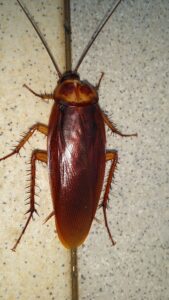
There are only a couple different kinds of cockroaches in Delta and surrounding cities, the most common species include the American cockroach and the German cockroach. Cockroaches can contaminate your food and cause asthma attacks and salmonella. Signs of cockroach infestation include discarded wings or exoskeletons, and a musty smell around your home. They are most commonly found in kitchens and bathrooms. Cockroaches tend to stay hidden, so if you see one moving around, that means that the population has become so large they are looking for new places to live in your home.
Old School Exterminators
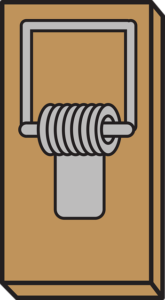
TRYING to get rid of household pests, whether they are just nuisances like silverfish, cockroaches and rats or potential house-destroyers like carpenter ants, exacts a toll in time, frustration and cost. And often, it means turning to professionals.
Even under ideal circumstances, human intervention does not always have much impact on pest mortality: more than 500 of the most dominant insect pests are resistant to one or more chemical classes of pesticides.
So these days, while exterminators or pest control operators, still use chemicals or pesticides, there is a growing movement that focuses on “integrated pest management.” This simply means fighting infestations in ways that are the least toxic to humans and to the environment.
The two schools are not mutually exclusive. Some old-school exterminators have begun responding to widespread consumer demand for less toxic chemical weapons by modifying their standard arsenals. While traditional exterminators lean toward chemical destruction, those using the integrated system prefer to detour pests, analyzing what attracts them in a particular home or apartment and why they congregate where they do. For those areas you can’t reach easily, you can use low-toxic and nontoxic dusts, like silica aerogel, white packets that absorb water, which can be put in areas hard to caulk. Or you can use another nontoxic material, diatomaceous earth. These materials dehydrate insects. Boric acid is low in toxicity, too.
The key is to reduce conditions that attract the pests by taking steps like these:
– Fixing leaks and keeping drains unclogged.
– Caulking cracks and crevices, like openings around pipes, fixtures and cabinetry.
– Vacuuming frequently.
– Putting food away in glass or hard plastic containers and keeping counters, cabinets, garbage cans and ovens clean.
– Inspecting grocery bags and boxes for infestation, and not allowing recyclables, including newspapers and magazines, to accumulate.
Outside, homeowners should store firewood off the ground and away from the house, trim tree limbs so they don’t hang over the house and drain standing water that can be a pest breeding ground.
Call us at Insect and Rodent Exterminators